 Ken Russell’s film of BILLION DOLLAR BRAIN, deliriously wacky though it is, is actually closer to Len Deighton’s source novel than the previous movies in the Harry Palmer series, apart from the ending. (Deighton’s climax is even grimmer than a LeCarre: as ever with this series, the filmmakers have sought something punchier, but even here, the big Finnish finish is suggested by a speech in the novel.)
Ken Russell’s film of BILLION DOLLAR BRAIN, deliriously wacky though it is, is actually closer to Len Deighton’s source novel than the previous movies in the Harry Palmer series, apart from the ending. (Deighton’s climax is even grimmer than a LeCarre: as ever with this series, the filmmakers have sought something punchier, but even here, the big Finnish finish is suggested by a speech in the novel.)
But the opening scene is all new — series regular Guy Doleman as Colonel Ross (mentioned only once in the book) breaks into the HP Detective Agency — above a surgical appliance shop, reached via a dismal neon-lit stair yowling with cats — and performs a search. Herky-jerky handheld shot follows a flashlight beam and reminds me of the search in BLADE RUNNER that turns up a snake scale in the bath, filmed in a similar way because Harrison Ford wasn’t available for a reshoot. Excellent gag, reminiscent of REAR WINDOW and CHINATOWN both — a filing cabinet marked DIVORCE yields two photos, one of a couple surprised in bed, the other of the chap swinging his fist at the lens. The next drawer down contains a smashed camera. HP himself (Michael Caine) arrives, armed, and Doleman spills Corn Flakes over the floor when he raises his hands. Jump cut to Caine shoveling it up, at Doleman’s feet (again). MI5 want Palmer back. He refuses. A package arrives — a key and money. The phone rings. Computer voice gives Palmer instructions —
HP himself (Michael Caine) arrives, armed, and Doleman spills Corn Flakes over the floor when he raises his hands. Jump cut to Caine shoveling it up, at Doleman’s feet (again). MI5 want Palmer back. He refuses. A package arrives — a key and money. The phone rings. Computer voice gives Palmer instructions —
 JUMP CUT! Palmer’s trademark spectacles LEAP off his face into the foreground as computer font lettering flickers and Caine, in the background, squints at his suddenly displaced specs. Richard Rodney Bennett is freaking out on piano like a drunken Rachmaninoff and lots of little Caines are voguing about in strange loops — it’s a particularly brilliant Maurice Binder title sequence, sans naked silhouettes but giving the distinct impression that this installment will be splashier, more sexy and exotic, more Bondian, than its predecessors. But the pre-creds sequence also assures us that our hero remains an underdog.
JUMP CUT! Palmer’s trademark spectacles LEAP off his face into the foreground as computer font lettering flickers and Caine, in the background, squints at his suddenly displaced specs. Richard Rodney Bennett is freaking out on piano like a drunken Rachmaninoff and lots of little Caines are voguing about in strange loops — it’s a particularly brilliant Maurice Binder title sequence, sans naked silhouettes but giving the distinct impression that this installment will be splashier, more sexy and exotic, more Bondian, than its predecessors. But the pre-creds sequence also assures us that our hero remains an underdog.
Palmer picks up a package. A thermos. He takes it to a shoeshop and subjects it to the Pedoscope — I am old enough to remember, dimly, X-ray machines in shoeshops. A brilliant idea — lets you see if your toes are cramped, in case you can’t feel it. Also gives you foot cancer, I suspect. Palmer’s thermos is full of eggs. In the book, he’s just given eggs. This is better — adds another layer of mystery, and the just leaves things more mysterious.
 I’d like to make the first film shot entirely in Pedoscope.
I’d like to make the first film shot entirely in Pedoscope.
Our clever screenwriter is Scots playwright John McGrath, who also co-wrote PLAY DIRTY for Andre DeToth, here a producer — De Toth’s bio is full of good Ken Russell stories. The whole business of Palmer no longer being at MI5 is McGrath’s invention too — and it actually makes him being recruited by another organisation more plausible.
Palmer’s instructions pack him off to Helsinki, where Francoise Dorleac gets a brilliant introduction. A tiny “big wheel” spins against the low sun. It’s second rotation flips the camera off into a fast pan that finds Caine, waiting for his contact. Sudden, dazzling Francoise close-up, speaking right into the lens. No context for where she is. Back to longshot, Caine turns, she’s behind him. Very MOD. Uses confusion as a means to attain clarity in a more exciting way. A bit like the eggs in the thermos, only in terms of mise-en-scene.
 Deighton’s Signe in the book is now the more pronounceable Anya, but she’s the same crazy bitch. Dorleac being marginally older than the character means she has less excuse for her extreme flakiness and so she’s correspondingly less sympathetic.
Deighton’s Signe in the book is now the more pronounceable Anya, but she’s the same crazy bitch. Dorleac being marginally older than the character means she has less excuse for her extreme flakiness and so she’s correspondingly less sympathetic.
Shakicam ski-bike ride to an isolated sauna and Karl Malden — this is the movie that gives you Francoise Dorleac, swathed in furs outside a sauna, and Karl Malden naked inside it. In the book, he’s Harvey Newbegin (great name, if obvious) but since our nameless spy is now a Harry, in the movie he has to be Leo Newbegin, which will take some getting used to.
Dorleac is reprising her role from CUL DE SAC, as the fickle tramp who’s lured a wealthy middle-aged man away from his stable marriage. Malden’s slightly crazed gusto perfectly suits the role, as he seems desperate for Palmer to approve his new love match. Palmer has just snogged Dorleac and so is a bit skeptical. A most original conception, your majesty — the birth of Venus.
A most original conception, your majesty — the birth of Venus.
Russell & McGrath get through exposition joyously — Caine is discomfited by nudity in the first section, then lounges in a bubble chair looking fatuous with a cigar while Dorleac drones tunelessly on a cello and Billy Williams’ camera soaks up Syd Cain’s design. Williams would follow Russell onto WOMEN IN LOVE, which was the reason he was making this in the first place.
 Amazing design as Palmer discovers a corpse — in the book, the scene is a laboratory in an apartment. Here, it’s a mansion walled in classy porn and jungled up with potted plants — hilarious, beautiful and surreal. The body (a fat one) is slumped facing an open window so his face is frosted. Then Palmer is chloroformed.
Amazing design as Palmer discovers a corpse — in the book, the scene is a laboratory in an apartment. Here, it’s a mansion walled in classy porn and jungled up with potted plants — hilarious, beautiful and surreal. The body (a fat one) is slumped facing an open window so his face is frosted. Then Palmer is chloroformed.
He wakes up in the back half of a car in front of a process screen. Rear projection never works in colour/widescreen movies of this time, but Russell gets some added value out of it by pulling out from the grainy street footage and panning onto Caine, so it’s like he’s woken up in a movie. Ross threatens to frame Palmer for the previous scene’s murder, and he’s forcibly recruited back into Her Maj’s Secret Service, to spy on Malden’s organisation from within. A spacious loft set — one of numerous vaulted chambers of this design in Russell’s oeuvre. The titular brain is mentioned, but all we see is a desktop terminal. Spurious drama — Malden is ordered to shoot Dorleac. He doesn’t.
A spacious loft set — one of numerous vaulted chambers of this design in Russell’s oeuvre. The titular brain is mentioned, but all we see is a desktop terminal. Spurious drama — Malden is ordered to shoot Dorleac. He doesn’t. REPORT TO TEXAS FOR INDOCTRINATION
REPORT TO TEXAS FOR INDOCTRINATION
Shock cut from hockey mask to multiplying bacilli suggest Russell was impressed by PETULIA the previous year. I think Mad Ken and Richard Lester were checking out each other’s work, influenced but also rejecting a lot of influence. I think they both felt the need to keep track of what the other was up to.
 Palmer is flown to Latvia with Vladek Sheybal, a Russell favourite. On a train — a teenage Susan George, Caine’s future co-star (THE JIGSAW MAN). And we meet Oscar Homolka in a scene containing broad farcical elements which is nevertheless straight from the book. Homolka was a memorable presence in FUNERAL IN BERLIN so it’s lovely to have him back, cackling insanely, an avuncular dumpling you nevertheless believe capable of terrible things. Russell was particularly amused by the book’s casting of Americans as villains and Russians as the good guys — he exaggerates it somewhat, as was his wont, but it IS true to the novel.
Palmer is flown to Latvia with Vladek Sheybal, a Russell favourite. On a train — a teenage Susan George, Caine’s future co-star (THE JIGSAW MAN). And we meet Oscar Homolka in a scene containing broad farcical elements which is nevertheless straight from the book. Homolka was a memorable presence in FUNERAL IN BERLIN so it’s lovely to have him back, cackling insanely, an avuncular dumpling you nevertheless believe capable of terrible things. Russell was particularly amused by the book’s casting of Americans as villains and Russians as the good guys — he exaggerates it somewhat, as was his wont, but it IS true to the novel.
Here in Latvia the film seems to have lost a Beatles song from its soundtrack — the Latvian “freedom fighters” employed by Malden — his cousins — also traffick in bootleg western goods. I REMEMBER this song from a TV screening. A double-cross — Malden wants Caine dead. And we get the film’s most beautiful image, cossack-like riders emerging from the winter sun. Like the private eye he briefly was, Palmer is knocked unconscious again. An occupational hazard for anyone in the Marlowe racket.
A double-cross — Malden wants Caine dead. And we get the film’s most beautiful image, cossack-like riders emerging from the winter sun. Like the private eye he briefly was, Palmer is knocked unconscious again. An occupational hazard for anyone in the Marlowe racket.
And awakens in a bath-tub full of corpses (the book). Grim comedy hi-jinks — a guard comes in as he’s contemplating escape. Awkward eye contact. The man begins to undress. Uh-oh. Sigh of relief — he’s just come to use the loo. (This is the third scene to wring comedy from men undressing together.) Two more guards enter, rush Caine, seizing and subduing him… soak a towel from the sink… and give his face a nice wash.
Shostakovich — Russell is just wild about all things Russian — limbering up for THE MUSIC LOVERS — a crimson bar, where Sheybal is apprehended and Caine compromised — Dorleac, who travels fast, is snapping the compromat of him being chummy with Homolka using a very obvious but chic spycam. Back to Helsinki — Palmer partners up with Newbegin (who just tried to have him killed) in his scam — claiming massive expenses from crazed American patriot General Midwinter to foment revolution in Latvia — and we’re off to Texas at last!
Back to Helsinki — Palmer partners up with Newbegin (who just tried to have him killed) in his scam — claiming massive expenses from crazed American patriot General Midwinter to foment revolution in Latvia — and we’re off to Texas at last!
Except Texas is one place the movie didn’t go — looks like they filmed in Finland and England only — so Middlesex is doubling for Texas. By setting the whole thing at night and making it rather surreal anyway, Russell gets away with this — a sort of Nazi rally/square dance/barbecue — in the book, Midwinter’s organisation is called Facts For Freedom (“The fact free people,” the unnamed spy’s boss calls them) and the three Fs form a sort of grid logo. Russell has the M and W of Midwinter’s name pressed together to form a sort of involuted swastika. Not subtle, this stuff, but satire rarely is.
 A Trump rally, basically.
A Trump rally, basically.
Midwinter is a bit subtler in the book too — he’s of Latvian descent and wants to free his former homeland. In the movie, he’s just a nutty American super-patriot. They got rid of his artificial arm, also — too much? What exactly would constitute “too much” in this context? “My arm is long and my vengeance is total!” bellows Ed Begley, eyes aglint with blazing insanity. Very good use of his Humpty Dumpty shape, apart from his egg (torso + head) he seems to be all legs. The brain itself — the facilities of Honeywell (do they still have a building on the road between Edinburgh and Glasgow?). Russell’s love of Lang’s METROPOLIS shines through. The other giveaway that we haven’t crossed the Atlantic is Donald Sutherland, oddly enough, fussing over terminals, at the tail-end of his European sojourn (Perth Rep, various cheapo horrors). His computer “expertise” perhaps earned him his role in SEBASTIAN the following year. Big Bondian set, all greatly amped-up from the book. Here, we begin to conclusively depart from the source, in interests of a big ending —
The brain itself — the facilities of Honeywell (do they still have a building on the road between Edinburgh and Glasgow?). Russell’s love of Lang’s METROPOLIS shines through. The other giveaway that we haven’t crossed the Atlantic is Donald Sutherland, oddly enough, fussing over terminals, at the tail-end of his European sojourn (Perth Rep, various cheapo horrors). His computer “expertise” perhaps earned him his role in SEBASTIAN the following year. Big Bondian set, all greatly amped-up from the book. Here, we begin to conclusively depart from the source, in interests of a big ending — Karl Malden escapes and Caine, about to be shot due to Dorleac’s compromat, strikes a deal with Midwinter to capture him. Two henchmen in stetsons accompany him back to Finland for this purpose. Attractive sequence in greenhouse! Stetson men shot at train station, Dorleac flees, having double-crossed Malden for those eggs (remember those eggs? Imbued with deadly germs stolen from Porton Down, Britain’s biological and chemical weapons facility — just saw a BBC documentary about it). Malden falls weakly into line now with Caine’s plans — must warn Midwinter not to invade Latvia as he’ll start WWIII. (Earlier, Malden has his own crazy moment — WWIII means nothing to him as long as he’s making a profit. Nicely underplayed (yet MASSIVE) moment from Malden, and it strikes me as psychologically acute — there are evidently people who simply refuse to imagine nuclear destruction or climate change.
Karl Malden escapes and Caine, about to be shot due to Dorleac’s compromat, strikes a deal with Midwinter to capture him. Two henchmen in stetsons accompany him back to Finland for this purpose. Attractive sequence in greenhouse! Stetson men shot at train station, Dorleac flees, having double-crossed Malden for those eggs (remember those eggs? Imbued with deadly germs stolen from Porton Down, Britain’s biological and chemical weapons facility — just saw a BBC documentary about it). Malden falls weakly into line now with Caine’s plans — must warn Midwinter not to invade Latvia as he’ll start WWIII. (Earlier, Malden has his own crazy moment — WWIII means nothing to him as long as he’s making a profit. Nicely underplayed (yet MASSIVE) moment from Malden, and it strikes me as psychologically acute — there are evidently people who simply refuse to imagine nuclear destruction or climate change.
Happily the movie omits Deighton’s description of Newbegin pressing his nose against a train window. One imagines a vast, ever-spreading pink pancake blotting out the sun if Malden were to attempt this.

The big Finnish finish — Midwinter’s cracker army advances across the ice, so Homolka bombs the ice and sinks them all — all lifted from Eisenstein’s ALEXANDER NEVSKY, but staged with trucks and a really impressive, weirdly fake day for night — I think they just erected black backdrops — it sort of does look like how the scene might be if it were floodlit. Disturbing mass drowning — also kind of funny, in an unpleasant sort of way. General Midwinter dies as he lived — a bellowing dwarf.
Caine awakens draped on the ice floe like Lillian Gish. Somehow the only survivor. Homolka magnanimously returns the eggs and says a dismissive eulogy for the “stupid” Begley. Caine returns to London — The eggs hatch. Amusing coda, not in the book, but Deighton might possibly have considered it if he’d thought of it.
The eggs hatch. Amusing coda, not in the book, but Deighton might possibly have considered it if he’d thought of it.
In the novel, our hero assassinates Newbegin to stop him defecting to the Russians. Kind of violates Deighton’s own rule about not letting his hero solve problems with violence — but has he really solved anything? In a way, being forced to kill IS the problem.
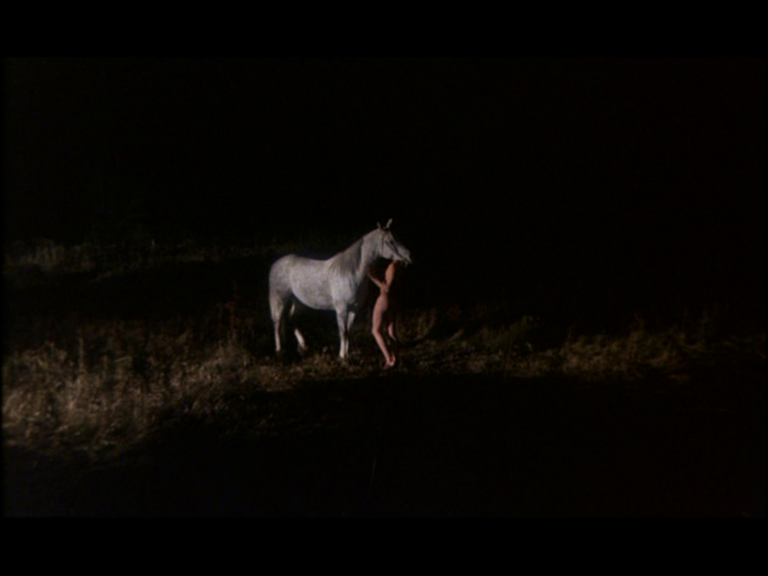
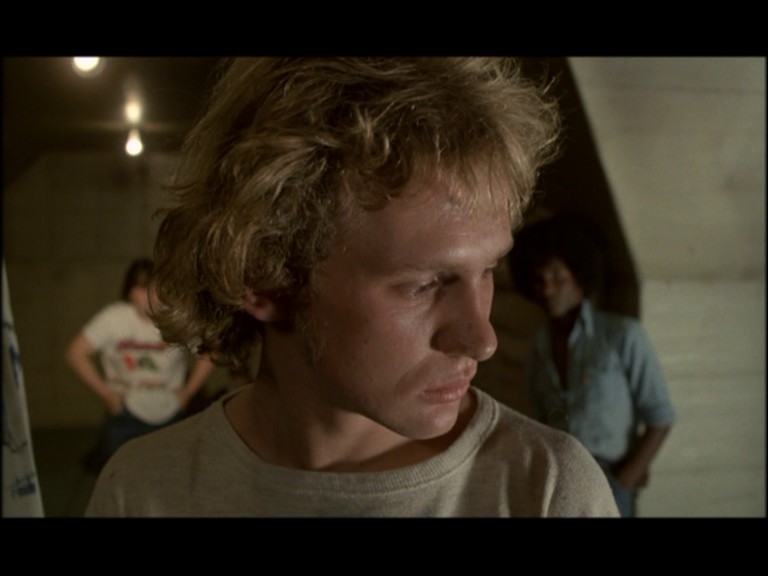
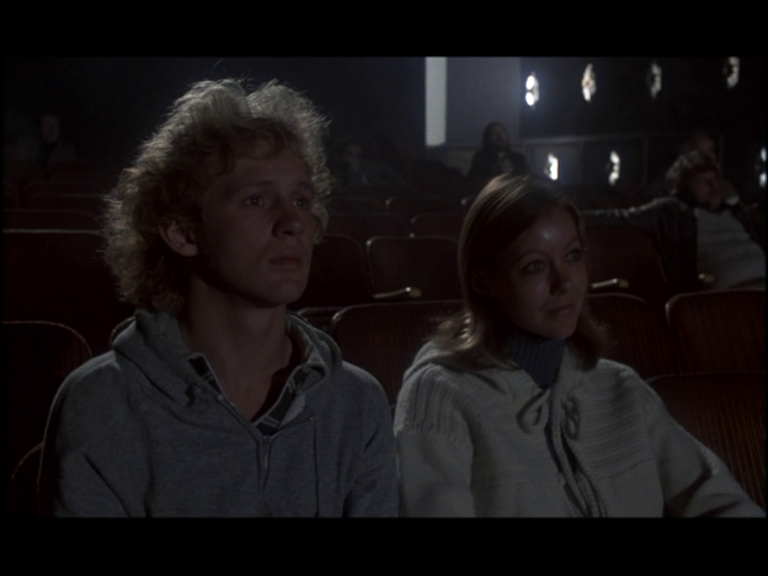
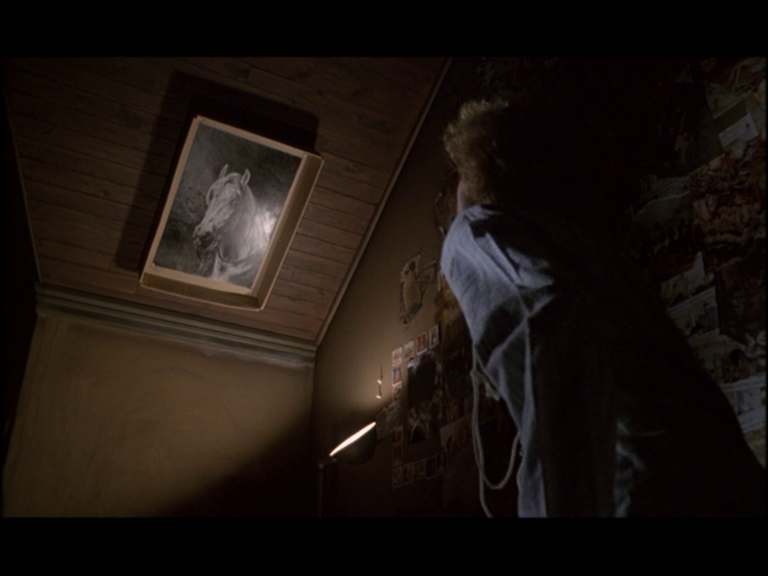
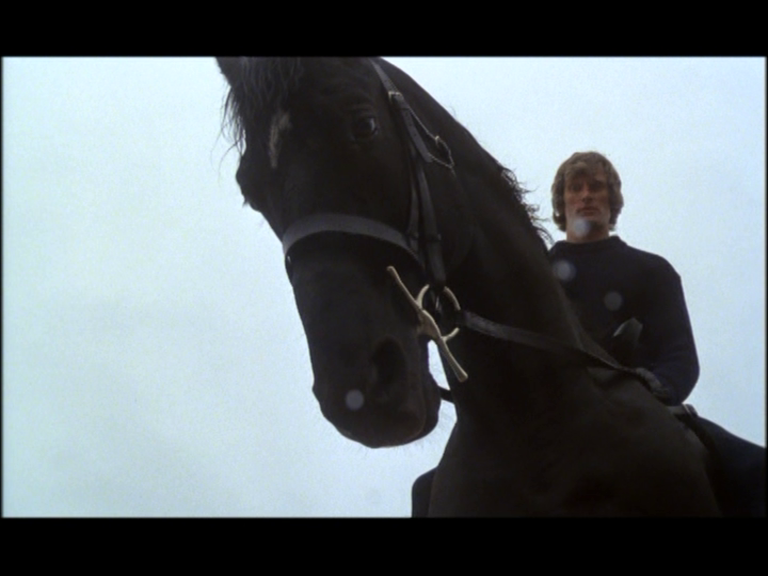

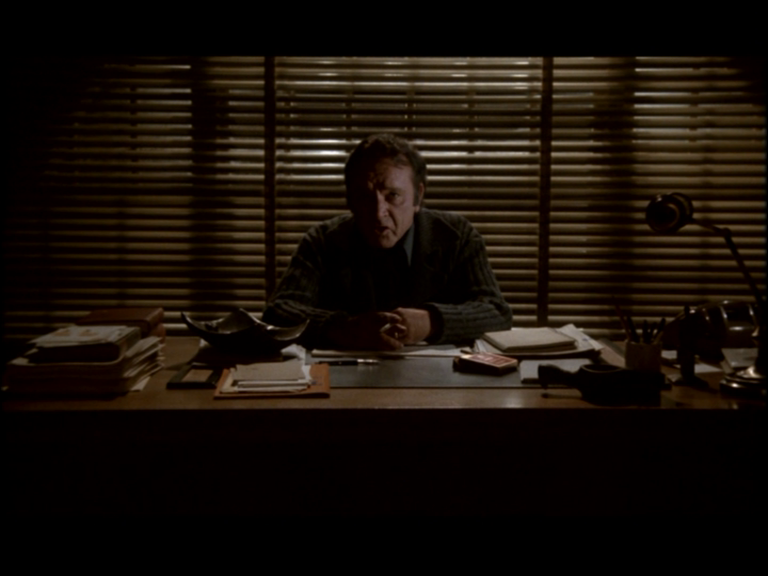

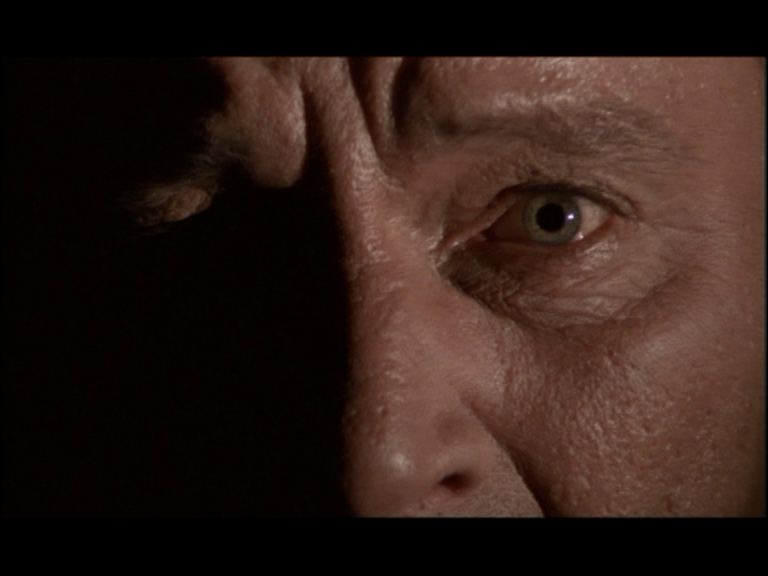

 Ken Russell’s film of BILLION DOLLAR BRAIN, deliriously wacky though it is, is actually closer to Len Deighton’s source novel than the previous movies in the Harry Palmer series, apart from the ending. (Deighton’s climax is even grimmer than a LeCarre: as ever with this series, the filmmakers have sought something punchier, but even here, the big Finnish finish is suggested by a speech in the novel.)
Ken Russell’s film of BILLION DOLLAR BRAIN, deliriously wacky though it is, is actually closer to Len Deighton’s source novel than the previous movies in the Harry Palmer series, apart from the ending. (Deighton’s climax is even grimmer than a LeCarre: as ever with this series, the filmmakers have sought something punchier, but even here, the big Finnish finish is suggested by a speech in the novel.) HP himself (Michael Caine) arrives, armed, and Doleman spills Corn Flakes over the floor when he raises his hands. Jump cut to Caine shoveling it up, at Doleman’s feet (again). MI5 want Palmer back. He refuses. A package arrives — a key and money. The phone rings. Computer voice gives Palmer instructions —
HP himself (Michael Caine) arrives, armed, and Doleman spills Corn Flakes over the floor when he raises his hands. Jump cut to Caine shoveling it up, at Doleman’s feet (again). MI5 want Palmer back. He refuses. A package arrives — a key and money. The phone rings. Computer voice gives Palmer instructions —
 JUMP CUT! Palmer’s trademark spectacles LEAP off his face into the foreground as computer font lettering flickers and Caine, in the background, squints at his suddenly displaced specs. Richard Rodney Bennett is freaking out on piano like a drunken Rachmaninoff and lots of little Caines are voguing about in strange loops — it’s a particularly brilliant Maurice Binder title sequence, sans naked silhouettes but giving the distinct impression that this installment will be splashier, more sexy and exotic, more Bondian, than its predecessors. But the pre-creds sequence also assures us that our hero remains an underdog.
JUMP CUT! Palmer’s trademark spectacles LEAP off his face into the foreground as computer font lettering flickers and Caine, in the background, squints at his suddenly displaced specs. Richard Rodney Bennett is freaking out on piano like a drunken Rachmaninoff and lots of little Caines are voguing about in strange loops — it’s a particularly brilliant Maurice Binder title sequence, sans naked silhouettes but giving the distinct impression that this installment will be splashier, more sexy and exotic, more Bondian, than its predecessors. But the pre-creds sequence also assures us that our hero remains an underdog.
 I’d like to make the first film shot entirely in Pedoscope.
I’d like to make the first film shot entirely in Pedoscope.
 Deighton’s Signe in the book is now the more pronounceable Anya, but she’s the same crazy bitch. Dorleac being marginally older than the character means she has less excuse for her extreme flakiness and so she’s correspondingly less sympathetic.
Deighton’s Signe in the book is now the more pronounceable Anya, but she’s the same crazy bitch. Dorleac being marginally older than the character means she has less excuse for her extreme flakiness and so she’s correspondingly less sympathetic. A most original conception, your majesty — the birth of Venus.
A most original conception, your majesty — the birth of Venus.
 Amazing design as Palmer discovers a corpse — in the book, the scene is a laboratory in an apartment. Here, it’s a mansion walled in classy porn and jungled up with potted plants — hilarious, beautiful and surreal. The body (a fat one) is slumped facing an open window so his face is frosted. Then Palmer is chloroformed.
Amazing design as Palmer discovers a corpse — in the book, the scene is a laboratory in an apartment. Here, it’s a mansion walled in classy porn and jungled up with potted plants — hilarious, beautiful and surreal. The body (a fat one) is slumped facing an open window so his face is frosted. Then Palmer is chloroformed. A spacious loft set — one of numerous vaulted chambers of this design in Russell’s oeuvre. The titular brain is mentioned, but all we see is a desktop terminal. Spurious drama — Malden is ordered to shoot Dorleac. He doesn’t.
A spacious loft set — one of numerous vaulted chambers of this design in Russell’s oeuvre. The titular brain is mentioned, but all we see is a desktop terminal. Spurious drama — Malden is ordered to shoot Dorleac. He doesn’t. REPORT TO TEXAS FOR INDOCTRINATION
REPORT TO TEXAS FOR INDOCTRINATION
 Palmer is flown to Latvia with Vladek Sheybal, a Russell favourite. On a train — a teenage Susan George, Caine’s future co-star (THE JIGSAW MAN). And we meet Oscar Homolka in a scene containing broad farcical elements which is nevertheless straight from the book. Homolka was a memorable presence in FUNERAL IN BERLIN so it’s lovely to have him back, cackling insanely, an avuncular dumpling you nevertheless believe capable of terrible things. Russell was particularly amused by the book’s casting of Americans as villains and Russians as the good guys — he exaggerates it somewhat, as was his wont, but it IS true to the novel.
Palmer is flown to Latvia with Vladek Sheybal, a Russell favourite. On a train — a teenage Susan George, Caine’s future co-star (THE JIGSAW MAN). And we meet Oscar Homolka in a scene containing broad farcical elements which is nevertheless straight from the book. Homolka was a memorable presence in FUNERAL IN BERLIN so it’s lovely to have him back, cackling insanely, an avuncular dumpling you nevertheless believe capable of terrible things. Russell was particularly amused by the book’s casting of Americans as villains and Russians as the good guys — he exaggerates it somewhat, as was his wont, but it IS true to the novel. A double-cross — Malden wants Caine dead. And we get the film’s most beautiful image, cossack-like riders emerging from the winter sun. Like the private eye he briefly was, Palmer is knocked unconscious again. An occupational hazard for anyone in the Marlowe racket.
A double-cross — Malden wants Caine dead. And we get the film’s most beautiful image, cossack-like riders emerging from the winter sun. Like the private eye he briefly was, Palmer is knocked unconscious again. An occupational hazard for anyone in the Marlowe racket. Back to Helsinki — Palmer partners up with Newbegin (who just tried to have him killed) in his scam — claiming massive expenses from crazed American patriot General Midwinter to foment revolution in Latvia — and we’re off to Texas at last!
Back to Helsinki — Palmer partners up with Newbegin (who just tried to have him killed) in his scam — claiming massive expenses from crazed American patriot General Midwinter to foment revolution in Latvia — and we’re off to Texas at last!
 A Trump rally, basically.
A Trump rally, basically. The brain itself — the facilities of Honeywell (do they still have a building on the road between Edinburgh and Glasgow?). Russell’s love of Lang’s METROPOLIS shines through. The other giveaway that we haven’t crossed the Atlantic is Donald Sutherland, oddly enough, fussing over terminals, at the tail-end of his European sojourn (Perth Rep, various cheapo horrors). His computer “expertise” perhaps earned him his role in SEBASTIAN the following year. Big Bondian set, all greatly amped-up from the book. Here, we begin to conclusively depart from the source, in interests of a big ending —
The brain itself — the facilities of Honeywell (do they still have a building on the road between Edinburgh and Glasgow?). Russell’s love of Lang’s METROPOLIS shines through. The other giveaway that we haven’t crossed the Atlantic is Donald Sutherland, oddly enough, fussing over terminals, at the tail-end of his European sojourn (Perth Rep, various cheapo horrors). His computer “expertise” perhaps earned him his role in SEBASTIAN the following year. Big Bondian set, all greatly amped-up from the book. Here, we begin to conclusively depart from the source, in interests of a big ending — Karl Malden escapes and Caine, about to be shot due to Dorleac’s compromat, strikes a deal with Midwinter to capture him. Two henchmen in stetsons accompany him back to Finland for this purpose. Attractive sequence in greenhouse! Stetson men shot at train station, Dorleac flees, having double-crossed Malden for those eggs (remember those eggs? Imbued with deadly germs stolen from Porton Down, Britain’s biological and chemical weapons facility — just saw a BBC documentary about it). Malden falls weakly into line now with Caine’s plans — must warn Midwinter not to invade Latvia as he’ll start WWIII. (Earlier, Malden has his own crazy moment — WWIII means nothing to him as long as he’s making a profit. Nicely underplayed (yet MASSIVE) moment from Malden, and it strikes me as psychologically acute — there are evidently people who simply refuse to imagine nuclear destruction or climate change.
Karl Malden escapes and Caine, about to be shot due to Dorleac’s compromat, strikes a deal with Midwinter to capture him. Two henchmen in stetsons accompany him back to Finland for this purpose. Attractive sequence in greenhouse! Stetson men shot at train station, Dorleac flees, having double-crossed Malden for those eggs (remember those eggs? Imbued with deadly germs stolen from Porton Down, Britain’s biological and chemical weapons facility — just saw a BBC documentary about it). Malden falls weakly into line now with Caine’s plans — must warn Midwinter not to invade Latvia as he’ll start WWIII. (Earlier, Malden has his own crazy moment — WWIII means nothing to him as long as he’s making a profit. Nicely underplayed (yet MASSIVE) moment from Malden, and it strikes me as psychologically acute — there are evidently people who simply refuse to imagine nuclear destruction or climate change.

 The eggs hatch. Amusing coda, not in the book, but Deighton might possibly have considered it if he’d thought of it.
The eggs hatch. Amusing coda, not in the book, but Deighton might possibly have considered it if he’d thought of it.


